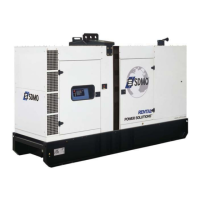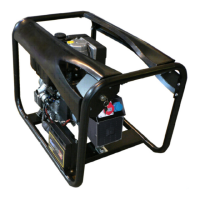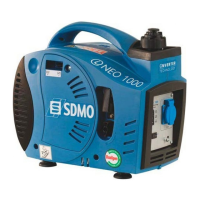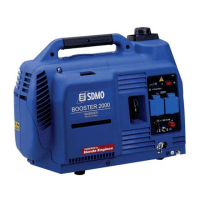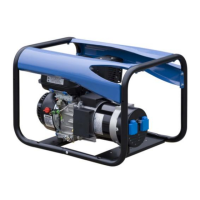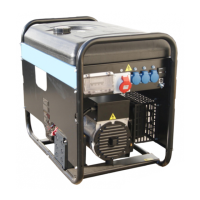Wattmetric control
The wattmetric control is used when two generating sets are coupled. It provides optimum management of the number of
generating sets operating by constantly analysing the power required by the user.
Let us take the example of a power plant of 4 x 600 kW generating sets.
The threshold setting screen (1-7-3-3) supplies the following data:
Threshold 1 GS => 2 GS 75% 450 kW Threshold 2 GS => 1 GS 30 % 360 kW
Threshold 2 GS => 3 GS 75% 900 kW Threshold 3 GS => 2 GS 30 % 540 kW
Threshold 3 GS => 4 GS 75% 1350 kW Threshold 4 GS => 3 GS 30 % 720 kW
The maximum available power is 600 x 4 = 2400 kW. Assuming that a single generating set is operating, we will have the following
sequence in the case of linear progression of the load.
When the power required by the application reaches 75% of the power of the generating set in operation (GS at priority 01), i.e.
450 kW, the second GS (at priority 02) is started and is synchronised with GS 1. Its flow is then closed.
The second GS thus coupled initiates its power on ramp (adjustable delay) and the distribution of power among the two generating
sets takes place. Each generating set will then take 50% of the required power, i.e. 225 kW.
When the power required for the application reaches 75% of the power of the two generating sets in operation (GSs at priority 01
and 02), i.e. 900 kW, the third GS (at priority 03) is then started and is synchronised with GS1 and GS2. Its flow is then closed. The
third GS thus coupled initiates its power on ramp (adjustable delay), and the distribution of power among the three generating sets
takes place.Each generating set will then take 33.33% of the required power, i.e. 300 kW, corresponding to 50% of its rated output
(600 kW).
When the power required for the application reaches 75% of the power of the three GSs in operation (GSs at priority 01, 02 and
03), i.e. 1350 kW, the fourth GS (at priority 04) is then started and synchronised with GS1, GS2 and GS3. Its flow is then closed.
The fourth GS thus coupled initiates its power on ramp (adjustable delay) and the distribution of power among the four generating
sets takes place. Each generating set will then take 25% of the power required, i.e. 337.5 kW, corresponding to 56.25% of its rated
output (600 kW).
The power required for the application may continue to increase up to the upper plant limit (95%) of 2400 kW, i.e. 2280 kW
(the setting can be changed).This corresponds of course to the upper generating set limit, i.e. 570 kW (95% of 600 kW).
Automatic operation (All Kerys PLCs in “AUTO” mode) (coupling when stopped)
Loss of grid voltage
•
Grid loss acquisition delay (controlled by the mains detection module).
• Generating set power units switched off.
• Generating set start request.
• The generating sets increase in speed.
• Speed stabilisation delay.
• Order of excitation for each generating set at nominal speed; the voltage is then quickly established on the busbar.
• Start of active power distribution.
• Resumption of application at rated voltage and frequency.
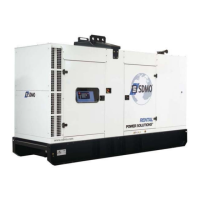
